Life
Permanent Exhibition is displayed in the Centennial Hall on the second floor of the Museum.
It is composed of six different zones by theme: Hansen’s Disease, Human Rights, Space Transition, Life, Sorokdo National Hospital, and Friends. Various artifacts and materials such as artifacts used by Hansen’s disease patients (8 types, 14 items including a personal knife used for self-treatment), which are designated as Registered Cultural Heritage No. 663, are displayed to help you understand the history of Sorokdo and Hansen’s disease and sympathize with the life of patients and the value of human rights.
Sorokdo inhabitants had to go through a tough time due to illness, hunger, forced labor, and exclusion.
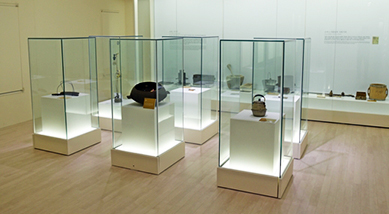
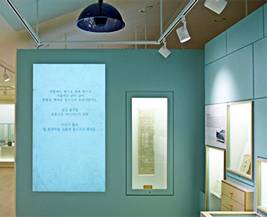
Sorokdo inhabitants had to go through a tough time due to illness, hunger, forced labor, and exclusion. Still, they carried on with their life, beautifully.
Exhibits in the Life Zone reflect their passion toward learning, will for life, efforts to seek a living for themselves, and how they relieved their pain through religion and art. Meet the resilient life of Sorokdo inhabitants.
Exhibits & Collections
-
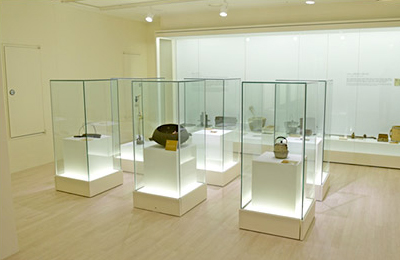 Artifacts Used by Hansen’s Disease Patients
Artifacts Used by Hansen’s Disease PatientsThese exhibits show the vigorous efforts Hansen’s disease patients made to lead their life, while Sorokdo National Hospital reached its centennial.
A personal knife for self-treatment, button hooks, hand-made pots, pot lifters, and tools for joint labor reflect unique culture and lifestyle of Hansen’s disease patients.
While being quarantined in Sorokdo for treatment, Hansen’s disease patients led a community life. The place lacked so many things and they had to endure it. They even had to treat themselves at times. You will be introduced to each exhibit in accordance with the visitor’s circulation route.
-
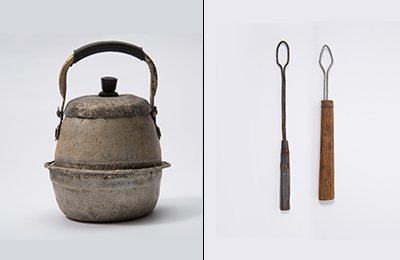 Hand-Made Pots and Button Hooks
Hand-Made Pots and Button HooksThis hand-made pot was made in the 1960s by putting four different object parts together. Two main bodies, the lid, and the handle all come from different objects. This is a precious item that reflects the time when commidities were insufficient and people had to depend on rationing.
The button hook was designed to help Hansen’s disease patients, who were incapable of sophisticated finger movements, fasten buttons. The hook and handle structure is all same but materials differ including wire, zinced plate, and wood.
-
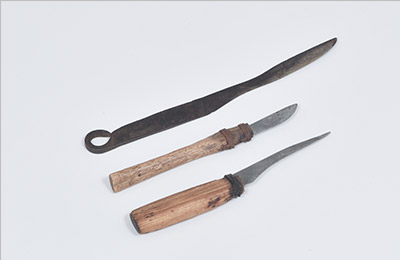 Personal Knife for Self-Treatment
Personal Knife for Self-TreatmentOnce, more than 6,000 patients lived in Sorokdo. Due to the lack of medical staff, some of them could not be taken care of and had to make and use personal knives for self-treatment.
They made blade by grinding iron and completed the shape by adding a handle. The blade became thin as even a small iron knife was saved and passed down from generation to generation.
-
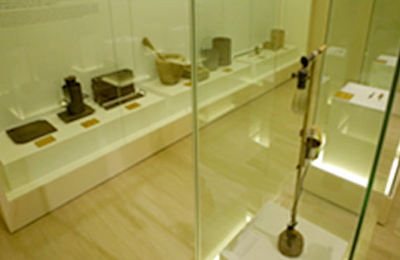 Tools for Joint Labor
Tools for Joint LaborThe Giwa mold, briquet mold, and cement block mold exhibited are tools that were used for joint labor and are relics related to forced labor and the jobs done by Hansen’s disease patients.
Giwa mold was used from the 1930s to make Giwa (roof tiles) for the roof of the detention ward that stands at the entrance of Central Park.Briquet mold was used from late 1950s and remains relatively intact. Cement block mold was used to make blocks for cattle pens, which still can be found in many different parts of Sorokdo.
-
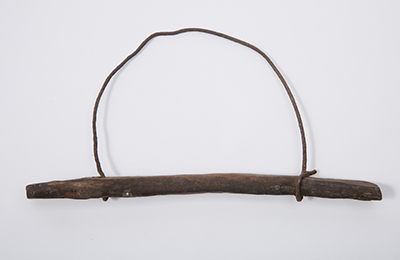 Pot Lifter
Pot LifterThe pot lifter features wood sticks hung at the upper part of the caldron and metal hoops which was put over the arms of patients to lift up pots. It was needed as Hansen’s disease patients could not lift hot pots directly with their dull and stumpy fingers.
Thick metal hoops that can endure enough weight were linked to wood sticks that were longer than the upper part of the caldron and had either a round or an angular shape.
-
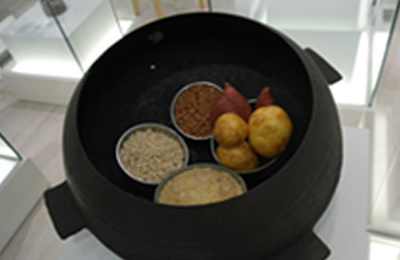 Gaewoobap
GaewoobapA dormitary were single people lived together was named Dokshinsa. People in Dokshinsa had to cook in one pot. Since mixing everyone’s ration in one pot to cook food may be unfair as some may get more and some less, they strictly divided their rations of food including potato, sweet potato, and meat in their own bowl when cooking. Gaewoobap is food culture unique to Sorokdo that reflects the time well.
By cooking individual bowls in one big pot, they could cater to their taste and save fuel at the same time. Food ingredients was the most common rations given and some females saved their insufficient rations to make money
-
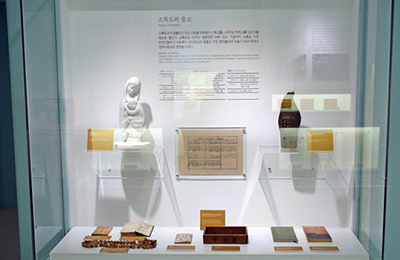 Religious Relics
Religious RelicsMost of Sorokdo inhabitants had religion. Religion served as a glimmer of hope for people with sick body and weary mind.
The relics exhibited are neither expensive nor rare. But they have been with Hansen’s disease patients through thick and thin.After being diagnosed with Hansen’s disease, which was compared to being sentenced to death at the time, the patients were quanrantined in Sorokdo and these items helped them not to give up their life. They are not ordinary items at all. We hope that the well-thumbed bible and rosary can show you how desperate they were back then.
-
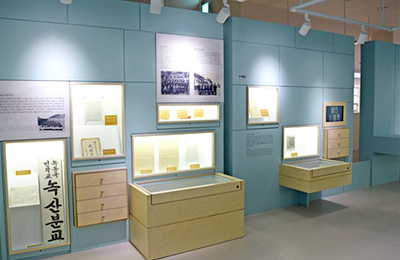 Educational Relics
Educational RelicsCould education go on in Sorokdo when people were subject to forced quanrantine and labor?
Feeling the need of education, Hansen’s disease patients started village-level education on their own. There also was perfuntory education provided by Japanese authority during the Japanese Colonial Rule aimed at controlling the patients.After liberation, however, a school system similar to that of the mainland was introduced with the establishment of Noksan Middle School and Seongsil Bible High School besides the existing Noksan Elementary School.
The attendance book, school administration record, literary magazines issued by each school, graduation examination sheets with quite high level of difficulty, and a valedictory speech script written in 1967 are displayed in this space.